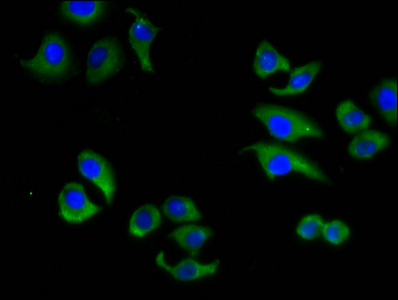ATP-dependent transporter of the ATP-binding cassette (ABC) family that actively extrudes physiological compounds, and xenobiotics from cells. Mediates ATP-dependent transport of glutathione conjugates such as leukotriene-c4 (LTC4) and N-ethylmaleimide S-glutathione (NEM-GS) (in vitro), and an anionic cyclopentapeptide endothelin antagonist, BQ-123. Does not appear to actively transport drugs outside the cell. Confers low levels of cellular resistance to etoposide, teniposide, anthracyclines and cisplatin.; Mediates the release of nucleoside triphosphates, predominantly ATP, into the circulation, where it is rapidly converted into AMP and the mineralization inhibitor inorganic pyrophosphate (PPi) by the ecto-enzyme ectonucleotide pyrophosphatase phosphodiesterase 1 (ENPP1), therefore playing a role in PPi homeostasis.; Inhibits TNF-alpha-mediated apoptosis through blocking one or more caspases.





